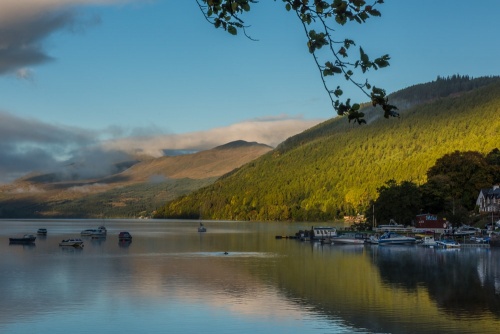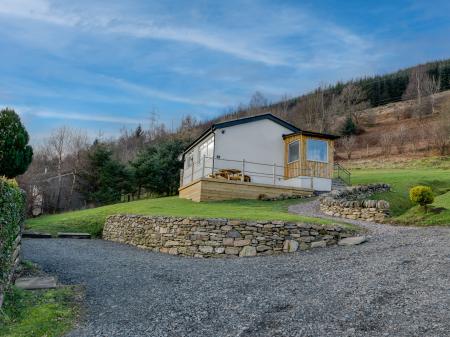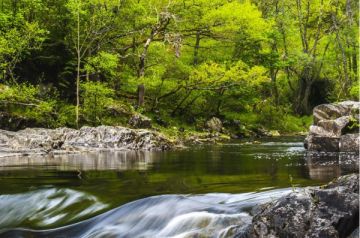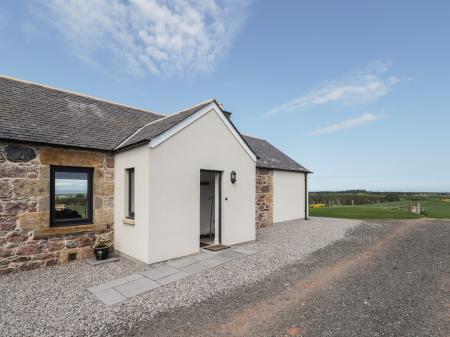
Scottish Crannog Centre
The Iron Age inhabitants of Loch Tay lived on crannogs; artificial islands built in the loch. There are at least 18 known crannogs in the loch, more than any other place in Scotland. The heritage of the crannog-dwellers can be experienced at the Scottish Crannog Centre near Kenmore, where an authentic crannog has been built using authentic ancient materials and tools. Learn how the crannogs were built and how people lived, with demonstrations of tools and skills.
Editor's Note
Our family visited the Crannog Centre and found it an extraordinary experience; a first-hand look into ancient life.
Acharn Hermitage and Falls of Acharn
At Acharn, on the southern shore of the loch, a trail leads through woodland to a peculiar 8-sided building erected as a viewing platform for the spectacular waterfalls. The viewing platform is reached through a dark tunnel that emerges at a viewpoint looking across the falls. The tunnel and Hermitage may have been built in the late 18th century by the Earl of Breadalbane.

Kenmore
Kenmore is an attractive village at the eastern end of Loch Tay, known for the Kenmore Follies, a series of unusual buildings erected in the parkland surrounding Taymouth Castle. Among the Follies is Maxwell's Temple, built as a memorial to Mary, Countess of Breadalbane. There are eccentric temples, bridges, lodges, and a hermitage. Many of the follies are inaccessible, but there is a lovely circular walk through the estate and around the mansion.
Killin
The attractive village of Killin is best known for the Falls of Dochart, a spectacular series of rapids. There is a popular outdoor centre, with information on a wide variety of outdoor experiences from water sports to hiking.
Finlarig Castle
Just north of Killin is Finlarig Castle, a grim 17th-century tower house built by 'Black' Duncan Campbell. A pit by the castle wall is said to be a murder hole, where the laird's enemies were executed while the laird and his family watched from the castle window above. A more likely explanation is that the pit is an old water cistern.
Also near Killin is the Moirlanich Longhouse, a fully restored traditional Scottish longhouse, now run by the National Trust for Scotland. The longhouse is built with cruck construction; bending green timbers to a point, an unusual technique in the Highlands.

Ben Lawyers
The peak of Ben Lawyers is just the most prominent in this mountainous nature reserve that takes up the north side of the loch. There are 7 Munros in the reserve (peaks over 3000 feet). Not surprisingly, the reserve attracts hikers of all abilities, as well as botanists drawn by the variety of alpine plants. This is a wonderful area to see wildlife, including red deer, ptarmigans, and wild grouse.
Easily accessible from the north shore of the loch is Fortingall, a pretty heritage village at the eastern end of Glen Lyon nown for the Fortingall Yew in the churchyard. The yew is said to be as much as 5,000 years old and among the oldest living things in Europe.












